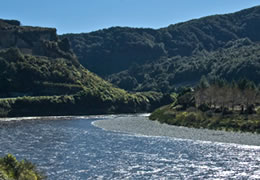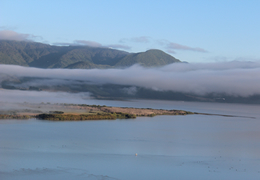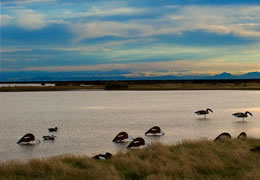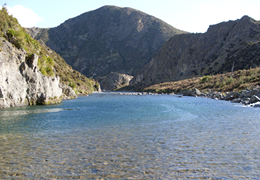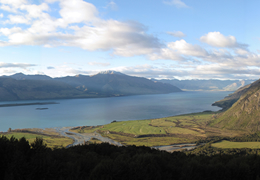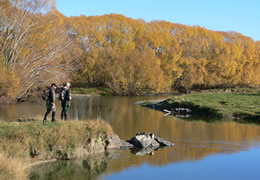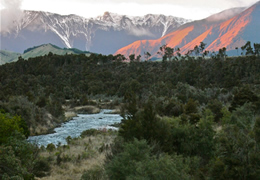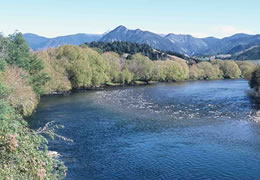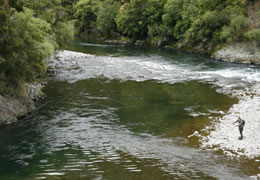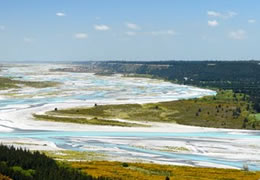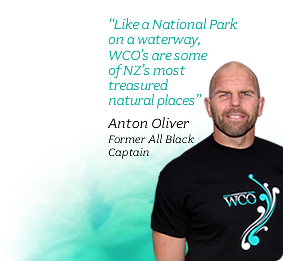Motu River
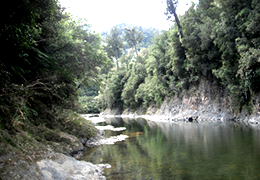
The Motu River was the first New Zealand 'wild and scenic' river to win protection from a Water Conservation Order in 1984.
The major waterway on the eastern side of the North Island rises on the southern side of the Raukumara Range, south of Opotiki, heads east and cuts its way through the range (where it receives important tributaries) and empties into the Bay of Plenty.
The Maori name Motu means cut off, isolated. This refers to the dense forests around the headwaters. This important wilderness river passes through mostly steep, uninhabited hill country with thick native bush. It is used for adventure tourism (jet-boating and white-water rafting). A mid-20th century proposal to dam the river for hydroelectricity was rejected.
The WCO says the river should be preserved as far as possible in its natural state from the Motu Falls to the SH35 bridge.

